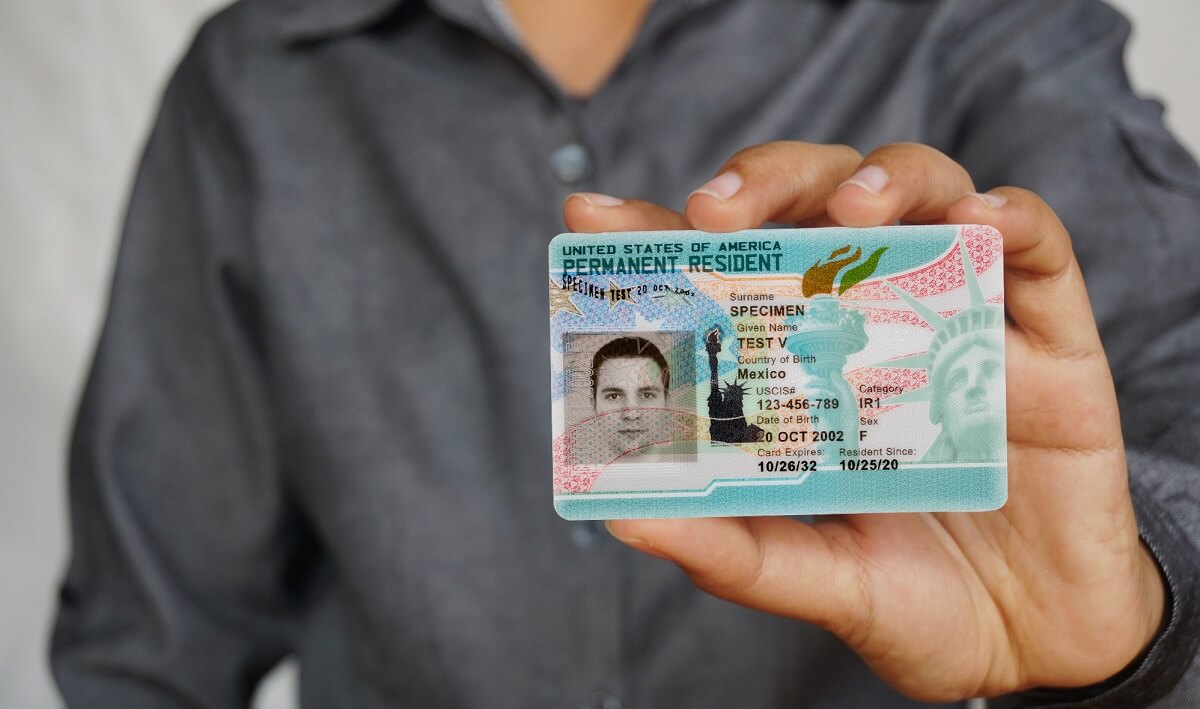Table of Contents
Introduction: The State of Immigration in the USA
Immigration is one of the most dynamic and frequently discussed issues in the United States. The country has always been known as a “melting pot,” welcoming millions of immigrants from all over the world. Today, immigration to the U.S. continues to be a focal point of national debate, policy change, and social discourse. Whether it’s the latest news on border security, shifts in immigration law, or the economic impacts of immigrant labor, staying informed on immigration news is crucial.
This article takes a deep dive into the current trends and updates related to U.S. immigration. From recent policy changes to the role of immigrants in the U.S. economy caheadline.com, we’ll explore how immigration is evolving in the 21st century and what the future may hold.
Key Changes in U.S. Immigration Policy
Recent Reforms in U.S. Immigration Laws
In recent years, U.S. immigration laws have seen several significant changes. For example, the Biden administration introduced policies aimed at reversing many of the Trump-era immigration restrictions. This includes efforts to reinstate DACA (Deferred Action for Childhood Arrivals) and TPS (Temporary Protected Status) for certain countries. These changes reflect the administration’s broader push for more inclusive immigration policies.
Impact of Policy Changes on Immigrants and Refugees
Changes in immigration policies often directly impact immigrants and refugees seeking asylum in the U.S. The Biden administration’s approach has shifted from enforcing strict border security measures to focusing on creating pathways for undocumented immigrants to obtain legal status. These changes have brought both hope and confusion among immigrant communities, many of whom have lived in fear of deportation.
How Immigration Policies Are Shaping the Economy
U.S. immigration policies not only impact individual lives but also the economy as a whole. The U.S. labor market relies heavily on immigrant workers, particularly in industries like agriculture, technology, and construction. Policies that either ease or tighten immigration processes directly affect these sectors and the economy’s overall productivity.
The Role of DACA and TPS in Current Immigration Discussions
DACA and TPS are two critical programs in the current immigration conversation. DACA allows certain undocumented immigrants who arrived as minors to remain in the U.S. without the threat of deportation. Meanwhile, TPS provides temporary relief to individuals from countries experiencing crises. Both programs are essential in shaping the future of U.S. immigration policy.
Current Trends in Immigration to the USA
Top Countries of Origin for U.S. Immigrants
The face of immigration in the U.S. continues to evolve, with individuals coming from diverse parts of the world. Historically, Mexico, China, and India have been some of the top countries of origin for U.S. immigrants. In recent years, however, countries in Central America, as well as African nations, have seen increasing numbers of immigrants arriving at U.S. borders.
Immigrant Demographics in 2024: Who’s Coming to the U.S.?
As of 2024, immigrant demographics in the U.S. reflect global trends. While many still come for economic opportunities, an increasing number are also fleeing political instability, violence, and climate-related disasters. Immigrants from places like Venezuela, Haiti, and Afghanistan have become more visible in recent immigration news.
The Shift in Immigrant Workers’ Roles in the U.S. Labor Market
The role of immigrant workers in the U.S. economy is evolving. Immigrants are no longer limited to low-wage labor in sectors like agriculture or construction. Today, a growing number of immigrants are entering the tech industry, contributing to startups and leading major corporations. This shift is changing how American society views immigration and its role in the labor market.
The Rising Popularity of Family-based Immigration
Family-based immigration remains one of the most common pathways for individuals to immigrate to the U.S. The U.S. immigration system prioritizes family reunification, allowing citizens and legal residents to sponsor relatives. This approach has faced both support and criticism, especially regarding its role in long immigration wait times.
Border Security and Immigration Enforcement
The U.S. Border Crisis: Causes and Solutions
The U.S. southern border has long been a focal point of immigration debates. The current “border crisis” is driven by a combination of factors, including violence, poverty, and political instability in neighboring countries. While there are no simple solutions, border security remains one of the most pressing issues for the U.S. government.
Asylum Seekers: What’s Happening at the Border?
Asylum seekers from around the world continue to make their way to the U.S. southern border. Many are fleeing persecution in their home countries and seeking refuge in the U.S. The asylum process, however, is often complicated, leading to backlogs and long waits for many applicants. The current administration has made changes to streamline asylum processes, but challenges remain.
Changes in Detention and Deportation Policies
Under the Biden administration, detention and deportation policies have shifted. The emphasis is now on targeting individuals who pose a threat to public safety rather than sweeping deportations of non-criminal undocumented immigrants. This change has led to debates about the balance between security and compassion in immigration enforcement.
The Debate Over Border Wall Expansion
One of the most controversial aspects of U.S. immigration policy is the construction of a border wall. While some argue it is necessary to control illegal immigration, others see it as a symbol of exclusion. The future of the border wall remains uncertain as both political parties continue to disagree on its effectiveness.
The Role of Technology in Immigration Processes
Biometric Screening and Digital Tracking Systems
Advancements in technology have revolutionized immigration processes. Biometric screening, including fingerprinting and facial recognition, is now widely used to identify individuals entering the U.S. This technology has been praised for improving security but also raised concerns about privacy and surveillance.
AI in Immigration Applications: How It’s Changing the Process
Artificial intelligence is increasingly being used to streamline immigration applications. From processing visa petitions to identifying potential security risks, AI is making immigration services faster and more efficient. However, there are also concerns about bias in AI systems and whether they can fairly assess applicants.
The Pros and Cons of Automating Immigration Procedures
While automation has the potential to reduce human error and speed up immigration procedures, it also poses challenges. There is the risk of job loss for individuals currently employed in immigration offices, and the impersonal nature of automated systems can make the process feel more bureaucratic and less empathetic.
The Rise of Virtual Immigration Interviews
Virtual interviews have become more common as part of the immigration process, particularly during the COVID-19 pandemic. While they offer convenience, there are concerns about the fairness of virtual interviews, especially for applicants with limited access to technology or who face language barriers.
The Impact of Immigration on the U.S. Economy
How Immigrants Contribute to Key Industries
Immigrants play a significant role in the U.S. economy, contributing to industries like agriculture, technology, and healthcare. Their labor helps sustain many sectors that rely on immigrant workers for both high-skill and low-skill jobs.
The Economic Effects of Immigrant Labor in Agriculture and Tech
Immigrants are crucial to the success of both the agricultural and tech industries. Many agricultural workers are undocumented, yet their labor is indispensable for harvesting crops. In the tech sector, immigrants have been integral in driving innovation and founding major startups.
How Immigrant Entrepreneurs Are Shaping the U.S. Business Landscape
Immigrant entrepreneurs have contributed significantly to the U.S. economy, starting businesses that create jobs and innovate industries. From Silicon Valley startups to food service businesses, immigrant-owned companies are a cornerstone of the U.S. economy.
The Financial Impact of Immigrant Remittances
Immigrants often send money back to their home countries, a practice known as remittances. These financial transfers play a crucial role in the economies of many developing countries and are a testament to the global reach of U.S. immigration.
Challenges Facing Immigrants in the U.S.
Legal Barriers: Navigating the U.S. Immigration System
For many immigrants, navigating the U.S. immigration system is a daunting task. Complex paperwork, long wait times, and shifting regulations can make it difficult for individuals to gain legal status or citizenship.
Social Integration: Overcoming Cultural and Linguistic Barriers
Once in the U.S., immigrants often face challenges related to social integration. Language barriers, cultural differences, and discrimination can make it difficult for newcomers to feel fully integrated into American society.
The Struggles of Undocumented Immigrants
Undocumented immigrants face significant hardships, from living in fear of deportation to being denied access to public services. Their contributions to the U.S. economy often go unrecognized, and they are at constant risk of being separated from their families.
Education and Employment Challenges for New Immigrants
New immigrants often struggle to find suitable employment or access quality education. Whether it’s due to lack of recognition for foreign degrees or the challenge of securing jobs without legal documentation, immigrants face many barriers to economic advancement.
The Future of Immigration Reform in the U.S.
What’s Next for the Dream Act and Comprehensive Immigration Reform?
The Dream Act and comprehensive immigration reform remain central to ongoing debates about U.S. immigration policy. There is growing momentum to pass legislation that provides a pathway to citizenship for undocumented immigrants, but political gridlock continues to impede progress.
Will We See a Path to Citizenship for Undocumented Immigrants?
As the conversation about immigration reform evolves, many wonder if a path to citizenship will become available for the millions of undocumented immigrants in the U.S. Advocates argue that legalization would benefit both immigrants and the country as a whole.
The Growing Push for Immigration Amnesty
Calls for amnesty for undocumented immigrants have gained traction in recent years, particularly as the public becomes more aware of the contributions made by these individuals. Amnesty could offer a permanent solution to the issue of undocumented immigration, but it remains a controversial topic.
How Political Parties Are Shaping Immigration Reform
The future of U.S. immigration reform will likely depend on which political party holds power. While Democrats tend to support more inclusive immigration policies, Republicans often focus on securing the border and limiting immigration. The outcome of future elections will play a crucial role in determining the direction of U.S. immigration policy.
Public Opinion on Immigration
How Americans Feel About Immigration: Polls and Trends
Public opinion on immigration is divided, with some Americans supporting more inclusive policies while others prioritize border security. Recent polls have shown increasing support for certain reforms, like a pathway to citizenship for Dreamers, but opinions remain polarized.
The Influence of Immigration on U.S. Elections
Immigration is a key issue in U.S. elections, with candidates on both sides using immigration policy to galvanize their bases. How candidates address immigration reform could have a significant impact on voter turnout and election outcomes.
Shifting Public Perceptions of Immigrants and Refugees
Public perceptions of immigrants and refugees are shifting, especially as more immigrants are recognized for their contributions to American society. However, challenges remain, particularly when it comes to stereotypes and misinformation about immigrant communities.
The Role of Media in Shaping Immigration Attitudes
The media plays a significant role in shaping public attitudes toward immigration. How news outlets cover immigration issues can influence how Americans view immigrants and immigration policies.
Conclusion: Looking Ahead to a New Era in U.S. Immigration
Immigration has always been a defining issue in the United States, and it will continue to shape the country’s future. As the nation grapples with policy changes, economic contributions from immigrants, and social challenges, it’s clear that the landscape of U.S. immigration is evolving. Moving forward, it’s essential that we strike a balance between securing borders and ensuring that immigrants are treated fairly and with dignity.








